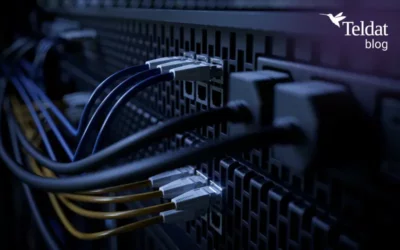
A significant departure from previous years is foreseen in 2020, where certain technologies widely talked about over the last few years are finally to be deployed.
Here I will select 5 of the most relevant trends for 2020 and describe how they will affect not just the professional user but also the day-to-day user – very numerous in number and with increasing decision-making capabilities.
Many other trends that I could just as easily have included on this list will be left off, but clearly much more analysis will be done before 2020 to give us a proven opinion of what that technological evolution will be like.
The 5 trends I’ve selected are:
1. 5G for everyone and everything
It is true that we repeat ourselves. 5G has been, is being and will be talked about in many forums. However, that is all going to change in 2020. The technology already exists but is not widely accessible as a service in the market for users. Over the coming year, operators will be able to offer 5G networks and their advancements, providing greater bandwidth, higher user density, low latency and reliability.
If we focus on Spain for a moment, we can see that Vodafone has already deployed a 5G network, Telefonica is looking to deploy 5G in non-standalone (NSA) mode by 2020 and Orange has decided to start in SA mode in 2021.
I should mention here that 5G is not just about more bandwidth but will allow additional services for billions of interconnected devices that share or send information to control centers for decision making. Companies, governments and customers benefit from being fully connected, while institutions need to cooperate with each other to facilitate this progress. As an example, the EU plans to have uninterrupted 5G coverage for railways and main roads by 2025.
2. A superfast Wi-Fi 6
Leading manufacturers have already introduced Wi-Fi 6 – also known as 802.11ax – to their product portfolios. But, with the Wi-Fi Alliance’s official certification program now open, more service providers are expected to formally and extensively deploy this technology in 2020.
5G and Wi-Fi 6 are completely different technologies that could compete in many high-speed non-cable scenarios. But really, the two technologies working together are the perfect end-to-end connectivity combination for the home and office.
Wi-Fi 6, like 5G vs 4G, not only implies a theoretically faster data transmission, it also solves some of the problems present in previous networks, such as the density of connected terminals and the low network performance when that density increases. The increase of
Wi-Fi network devices is expected to keep growing at a very high rate. Not only that, data consumption and network intelligence capabilities should also grow in order to keep pace with end-user service and quality demands.
3. Artificial Intelligence (AI) and big data
The telecommunications sector sees Artificial Intelligence – AI as a facilitator of spectacular improvements in communications technologies and services. In order to optimize their operations, operators are implementing AI to offer improved customer servicers, create smarter network implementations and incubate new companies that can develop more advanced services.
AI is being used more and more in different aspects of companies. It is essential for the optimization and predictive maintenance of telecommunications company networks. AI uses chatbots and virtual assistants to improve customer services and satisfaction. More and more AI-related products are appearing to detect fraudulent activity. And if that were not enough, AI facilitates making and executing decisions based on analyzing large amounts of data collected every day from multiple sources.
4. The Internet of Things (IoT)
The expansion of the new connectivity technologies described above will allow many everyday devices to be connected to each other and the Internet in 2020. Many of these devices already exist today but are not very intelligent and operate autonomously. IoT will allow greater information exchange, base station monitoring, measurement data capture, remote control and automated decision-making.
IoT will be able to use communications technologies like BLE, 5G or Wi-Fi 6. But IoT doesn’t just involve connectivity technologies; it is also an excellent opportunity to create new services for industry and other market sectors.
IoT has resulted in more and more devices on the network and also more opportunities for security breaches. Managers of these new services and technologies providers must plan ways to protect data privacy, defend users against attacks and (above all) ensure reliability. Otherwise, end clients are unlikely to hire the new services being marketed.
5. Digital privacy, cybersecurity, and resilience
Generally speaking, digital privacy refers to the level of control an Internet user can exert over his/her data, limiting the access other people or institutions may have to private information. Privacy is so crucial for the success of services over public networks that, in 2019, the EU changed its data protection requirements – GRDP.
In the (presumably) more interconnected world of 2020, cybersecurity will be key to help companies and individuals be less exposed to risks that could cause great harm (not only in relation to the aforementioned data protection, but also in terms of contracted services). Solutions that focus on protection shall be an integral part of the new services offered by providers during the upcoming year.
Lastly, given the growing risk, in 2020 companies will need to invest in products that shield them against vulnerabilities and allow them to manage existing risks with as little impact as possible.
Conclusion
The current forecast on telecommunication trends for 2020 present interesting scenarios for companies like Teldat. Opportunities await that can help us become a key software & product developer.

























